Digital has always been in our DNA!
Today, we may consider ourselves fortunate to live in a time of dramatic, rapid change, and witness the beginnings of the Fourth Industrial Revolution. A revolution that is heralded to bring change on a scale larger than any previous industrial revolution, take place over a more compressed timeframe, and have a dramatic impact on not just our professional lives, but also our personal lives, along with the wider society in which we all live.
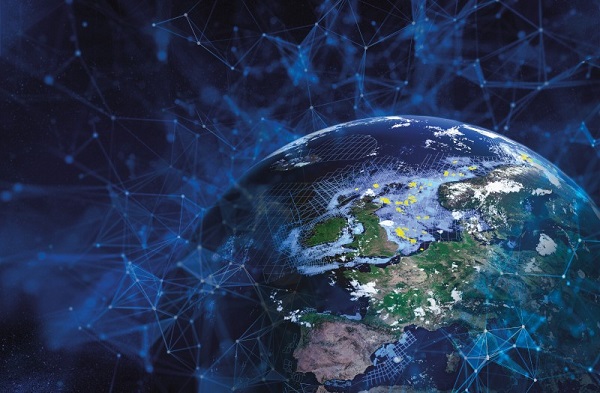
Digital technology is considered to be a major component of this Fourth Industrial Revolution, with: innovation, integration, and automation taking place at unprecedented speed; “things” previously isolated now being infused with the capability to connect; and increasingly “intelligence” is embedded into everything that we interact with. Indeed, as much as digital is driving this revolution, it is also the glue that binds the physical and digital worlds together, making it often more difficult to distinguish the two—as we see deeper integration and evolution into one holistic system. Some would even argue that this Fourth Industrial Revolution challenges us to redefine what it really means to be human—as we integrate digital technologies into our daily lives, activities and even into our bodies—are we defined purely by our physical bodies and chemical DNA, or can we get a better understanding of ourselves by looking at our digital footprint; our digital DNA?
In order to contemplate a possible answer, let us consider the following digital journey…
Quite a number of years ago, in the mid-1980s, while studying geology, physics, and mathematics at university, I recall hearing for the first time, the Schlumberger name, in the context of a module on wireline logging, and as the “inventors” of wireline formation evaluation. The realization was sudden, and it hit like a blinding light. Here was a company acquiring discrete wellbore data, point by point, and using that to build representations of subsurface geological layers. While we might never get to see or feel the physical reservoirs in which the hydrocarbons were stored, with the innovative Schlumberger formation evaluation logs, we could most definitely get a representation of the formations and fluids from their digital footprint; their digital DNA.
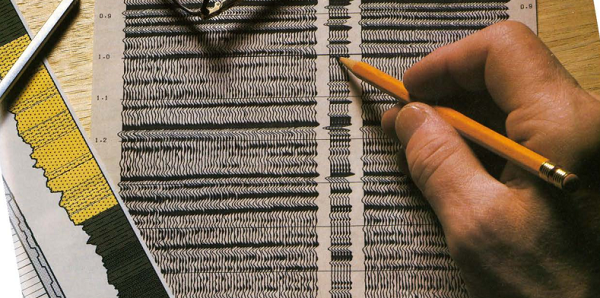
Soon thereafter, while undertaking a Masters in Petroleum Geology, I got the opportunity to intern with Anadrill, a recent Schlumberger acquisition whose mission was to digitalize all aspects of oil well drilling operations, from the Analysts mudlogging services through to Dowel directional drilling. The possibilities were immediately visible to all involved. While we might never get to see the physical wells we were drilling, we could—with the classic Schlumberger “can do” attitude—most definitely get a representation of the wells from their digital footprint; their digital DNA.
It did not take long for Schlumberger to port its wireline technology into the drilling environment, and rapidly develop MWD (measurement-while-drilling) and LWD (logging-while-drilling) technology, which would not only give digital data as to how the drilling operation was progressing, but also give a representation of the subsurface geology through which the well was being drilled, all in real time. While some saw the capability to obtain this data while drilling (much earlier in the drilling process than available from traditional wireline) as an end goal in itself, others were asking how could this real time digital data stream along with the integration of geological and drilling information form the basis for further innovation—how could this technology allow us to do things differently and to what benefit? It was not long before Schlumberger innovated again with the development of “GeoSteering”, whereby the wellbore path was drilled, not geometrically as has been done previously, but “steered” through the production sweet spots according to subsurface “geology” as interpreted from the real-time digital footprint; the digital DNA.
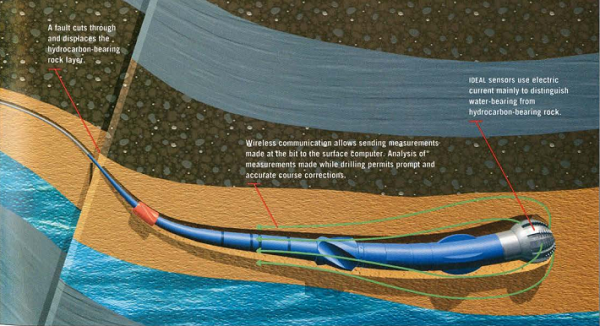
By the mid-1990s, Schlumberger had expanded into many areas of digital activity, and with the conversion of the internal network to TCP/IP, creation of GeoQuest, and a variety of platforms, it was apparent that “digital” was going to play a much larger role within Schlumberger and the oil and gas industry. With this in mind, it was time to upskill my digital capabilities, and I took educational leave from Schlumberger to undertake a Masters in Information Technology. I selected a masters degree with three key focus areas: Business (all activity needs to add value to the business), Technology (innovation, iteration, integration), Behavior (the hardest part in many projects is very often the softest part, that is to say the people). Spending time outside Schlumberger and the oil and gas industry, there was a steep learning curve gaining insights into a number other industries, including: Telecommunications, IT, internet, media, communications, which were all evolving rapidly with the infusion of digital and transforming in ways not thought possible. It became increasingly apparent that everyone of us needed to develop our digital capability—not just once, but on an ongoing recurring basis—in effect we need to build digital into our DNA.
"We perceive the next decade to be one where information technology changes, in a fundamental way, how we and our customers run our business."
By mid-2000s it was time to rejoin Schlumberger and bring many of the lessons learned in the digital world to the oil and gas industry. However, the industry was not necessarily ready. I recall many discussions with clients about the possibility and flexibility of browser-based software and being met with the response that “no serious engineering or geological software would ever be run in a browser!”.
Similarly, attempting to get oil and gas teams to work remotely in a distributed fashion, was met with the simple reply that “we’ll just fly everyone to the same location, and have them interact, and work face to face”. Meanwhile, Schlumberger continued to steadily build its capability by acquiring digital companies and products: Technoguide (Petrel), ECLIPSE industry-reference reservoir simulator), Sema (IT consultancy), Inside Reality (3D virtual reality), InnerLogix (data quality management), Integrated Exploration Systems (petroleum systems modeling), Techsia (petrophysical software) and/or formulating new business areas: VMG Symmetry (Process Simulation Platform), Wellbarrier (well integrity illustration and management). In parallel with all the Schlumberger acquisitions, businesses were increasing the value of their services by adding digital capability. All in all, right across the board, Schlumberger was increasing their digital footprint; their digital DNA.
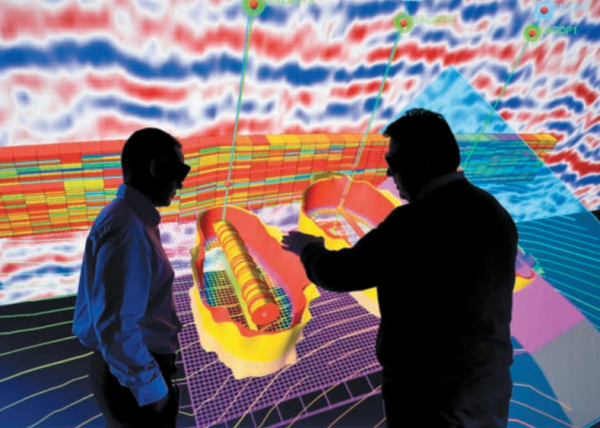
When we roll forward to the 2010s, we enter a decade with a tsunami of digital initiatives, including: acquisitions: SPT Group (Olga, MEPO), Geoservices (Flair); the creation and development of: STIC (Software Technology Innovation Center), SLIIC (Schlumberger Industrial Internet Center), DELFI cognitive E&P environment), Agora (IoT and edge computing); significant contribution to the OSDU™ (Open Subsurface Data Universe Forum) to foster the development of an open source standard data platform for the oil and gas industry. These all enabled the industry to adopt digital technology with an intensity not previous seen, and with the focus not just on cost savings, or doing things better or faster, now the question began to be asked as to how this multitude of digital technologies could allow the industry to do things differently and to what benefit? In many ways these technologies would enable us to model the entire value chain of the upstream oil and gas industry, and allow us to get a digital representation or part or all of any given organization, applying groundbreaking analytics and machine learning technologies, all from the digital ecosystem in which they make their digital footprint; their digital DNA.
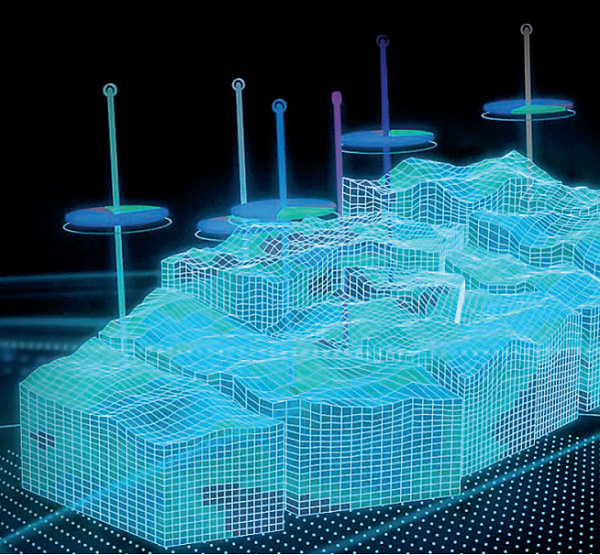
To return to our initial question, do we define by physical or digital?
Today in 2020, we integrate digital technologies into our professional lives, daily activities and across the entire energy value-chain, we increasingly see how our industry can be defined not only by the physical, nor only by the digital, but by both – two separate strands of understanding - with increasing importance and value perhaps being derived from the digital and integration component. For Schlumberger, from the perspective of one person over a period of 30 years, we can clearly see how Digital has always been in our DNA!
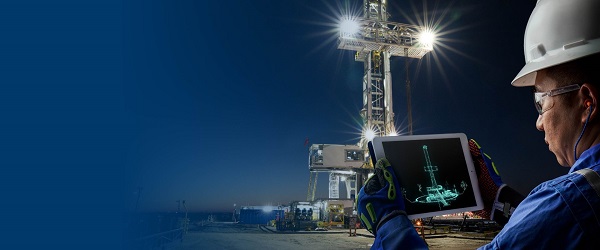
The same can be said for ourselves in our personal lives, or even wider society – how we define ourselves as human into the future may well be a combination of digital integrated with the physical – as perhaps we might see already in the way our children increasingly define themselves among their peers by their digital footprint - their digital DNA!
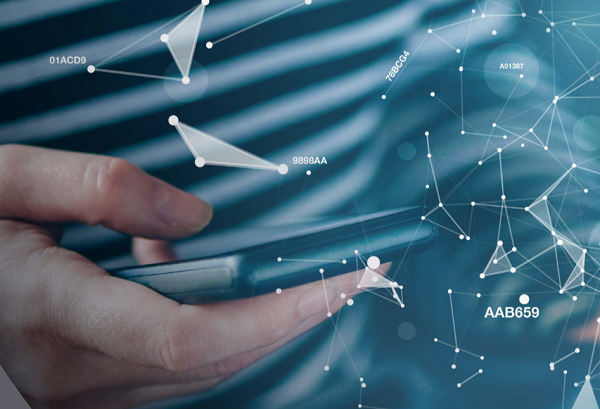
Author information: Over the past decade, Peadar has undertaken several 10k open water charity swims around physical lighthouses in his native Ireland – more recently, he finds himself immersed in digital workshops helping clients navigate digital ecosystems and establish their digital lighthouse projects. As a Digital Consultant, his driving ambition is to: assist every client organization to visualize their digital future - secure their digital footprint by transitioning their people, and transforming their business - and ultimately, ensuring that Digital is always in their DNA!

